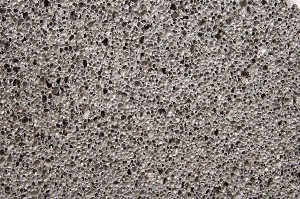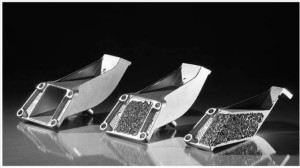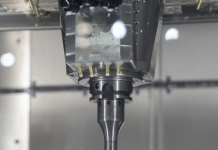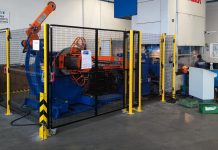 Materials recently conceived, with peculiar characteristics, metal foams are arousing the interest of several sectors, constantly identifying new application sectors
Materials recently conceived, with peculiar characteristics, metal foams are arousing the interest of several sectors, constantly identifying new application sectors
Foams belong to the category of cellular materials, that is to say that class of materials characterized by low densities coupled with interesting mechanical, physical and chemical properties. The cellular structure is constituted by a solid metal with a good part of the volume taken up by air pores (or gases), which can be closed or open, thus leading to the definition of open cell foam and of closed cell foam. More precisely, we should refer to foams when cells are closed and not communicating and of sponges. Actually, the common use generically leads to consider “metal foams” the uniform dispersions of the gaseous phase in a liquid or in a solid, with the gas occupying over 70% of the volume.
The study about metal foams started in the aerospace sector, thanks to studies about new materials able to combine lightness and resistance. The successive technological development, with the development of productive processes at sustainable costs, with structures globally more homogenous, has allowed the introduction of these materials in less wealthy sectors, too, even if their diffusion is till limited and numerous are the researches carried out by Universities and Research Bodies.

What characteristics and productive processes
Starting from their classification, foams can be grouped according to their structure, so defining three macro-groups: isotropic, anisotropic and orthotropic foams. Naturally, each group will be characterized by different properties, performances and applications.
Metal foams match lightness with other interesting specifications, such as the great capacity of absorbing deformation energy in narrow spaces and/or in gradual way; this makes the metal foam an excellent material for structural filling, suitable for the production of collapsible components with high energy absorption, like rail bumpers. Metal foams have lower conductivity than metal materials from which they originate; some foams, for instance aluminium ones, have excellent properties of soundproofing and permeability to liquids and air that make them very interesting in several industrial sectors and in building.

The material properties are strongly influenced by productive processes, which are manifold and are generally classified according to the state of the starting metal.
Four process typologies are then defined:
– from liquid metal
– from solid metal in powder
– from deposition of metal vapour o gaseous metal compound
– from solution of metal ions
Each productive process can be used on a limited group of metals and creates a porous material characterized by a limited range of relative density (ratio between foamed and solid material) and of pore sizes. Likewise, some processes lead to open cell foams, other to foams with neat prevalence of closed cells. We can therefore state that different materials require different processes resulting in different outcomes and then different uses.
If the properties of a metal foam depend on the properties of the solid material, on the relative density, on the pore sizes, on the type and morphology of cells, then to obtain the desired property profile it is necessary to combine metal, density and porosity adequately.
From performances to practical applications
Performances depend not only on the material but also on the density, on the cell type (size, shape and distribution), on the productive process and, naturally, on the presence of defects.
Metal foams are used in several sectors, with applications of functional and/or structural type, from heat exchangers to filters, silencers and whenever it is important to absorb vibrations, sounds or energy of various types. Metal foam sandwich panels, able to create light but stiff structures, provide the great advantage of being free from problems of flame resistance or combustion gas production in case of fire, just because they are fully made of metal. Besides light structural steel work structures, sandwiches are used as anti-explosion panels, being able to absorb the energy generated by eventual explosions.



